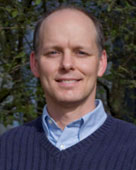Jim Thompson (USA)

Name: Jim Thompson
Age: 44
Position: Associate Professor (since 2004)
Address: Division of Plant and Soil Sciences, West Virginia University, Morgantown, WV
E-mail:
1. When did you decide to study soil science?
In high school, I was interested in science, particularly chemistry. During a presentation by a college recruiter from Penn State University who was visiting our high school, the recruiter began listing fields of study that we might consider. One subject on the list was agronomy—the study of soil management and crop production. Thinking that this might be a way for me to combine my interest in science with my interest in the environment, I began to seek out additional information about agronomy. As Google had not been invented yet, I consulted our encyclopedia. After being accepted to Penn State (as a chemistry major), I made an appointment with a faculty advisor from the College of Agriculture, and I soon changed my major to agronomy.
2. Who has been your most influential teacher?
There have been several high school and college teachers who were influential in developing and encouraging my interest in science, particularly soil science, and especially pedology. Among them, the teacher whose influence I see most clearly in my own teaching is Dr. Ed Ciolkosz. While “encouraging” may not be the best way to describe his approach, his comprehensive treatment of soil genesis and morphology along with his attention to detail and his high expectations forced me to work harder and build knowledge, not just accumulate facts. I also appreciate Dr. Gary Petersen for fostering an appreciation for soils and landscapes and the inherent spatial component of soil science.
3. What do you find most exciting about soil science?
The soil is like a puzzle. When viewing a soil profile, we identify horizons and describe their characteristics. This provides us with important information about the soil, the site, and the conditions under which that soil developed. Adding observations about the landscape in which that soil is found helps relate even more about the environmental conditions that produced that soil, as well as a further indication as to how that soil will respond to land use and management practices. What is most exciting is that we can assemble this puzzle at local, regional, or global scales to reveal the patterns that allow us to effectively communicate our knowledge of soils to those who can use it to make informed decisions.
4. How would you stimulate teenagers and young graduates to study soil science?
To motivate students to study soil science, it is necessary to give them opportunities to interact with soils. Take them out to the field and show them soil profiles, and then demonstrate how to interpret the story that is written in the soil morphology and the surrounding landscape. Having the ability to unlock these secrets can be illuminating and inspiring.
5. How do you see the future of soil science?
I am confident that the perceived importance of soils and soil science will continue to grow, although I am less certain that those of us who actively practice soil science as a profession will be viewed as equally important. There is an interconnectedness between soils and land use, between soils and ecology, between soils and human welfare. Similarly, there is an interconnectedness between soil science and other disciplines (geography, geology, hydrology, ecology, etc.). Within the scientific community, soil scientists need to increase interaction with these other disciplines while maintaining an identity for soil science as a distinct—and critically important—field of study. Beyond that, we need better marketing and public relations.




